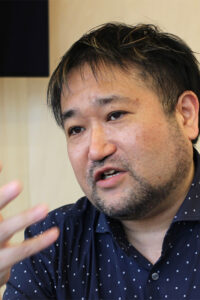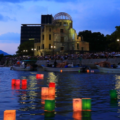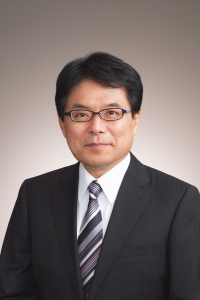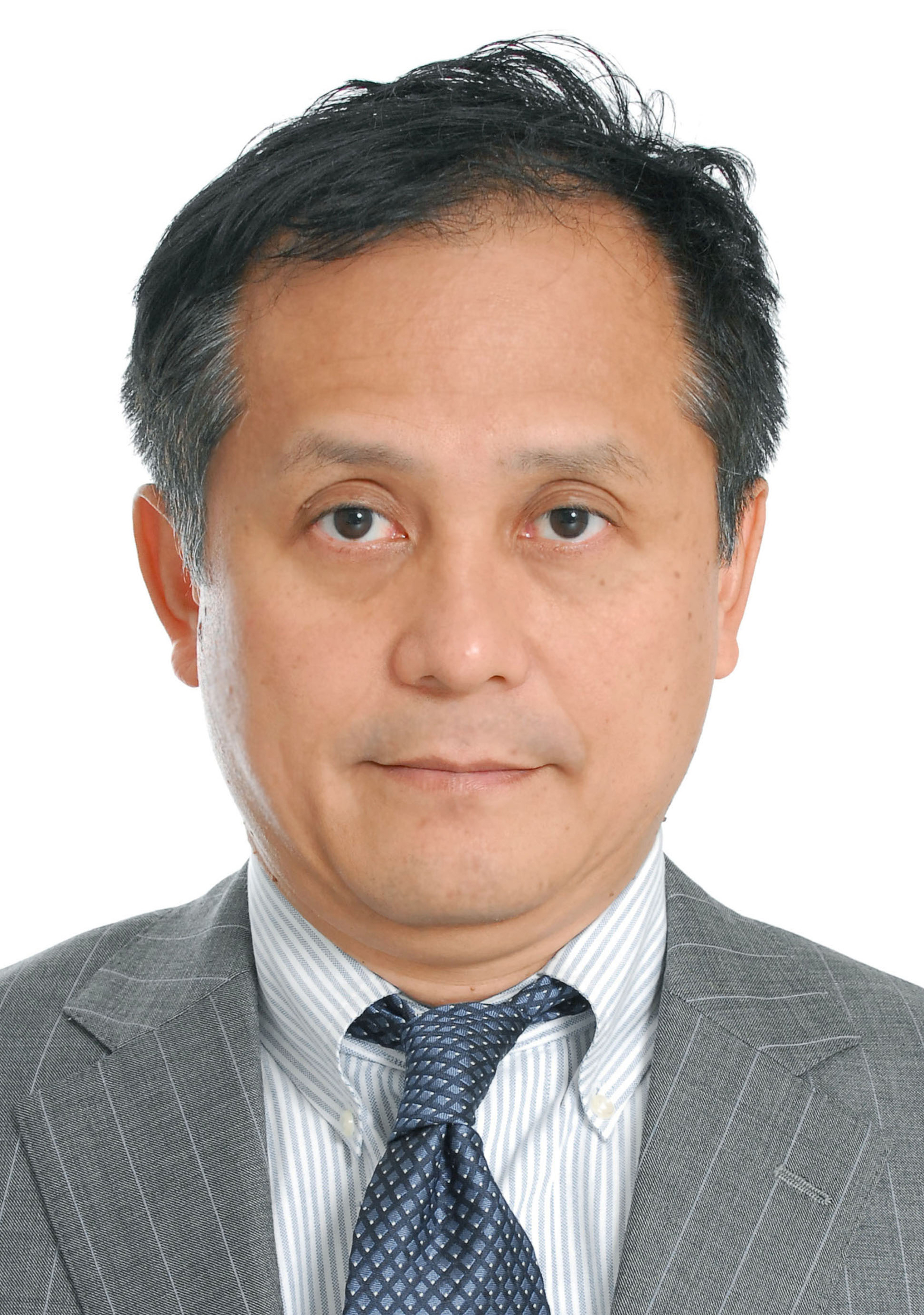Watched the film Oppenheimer
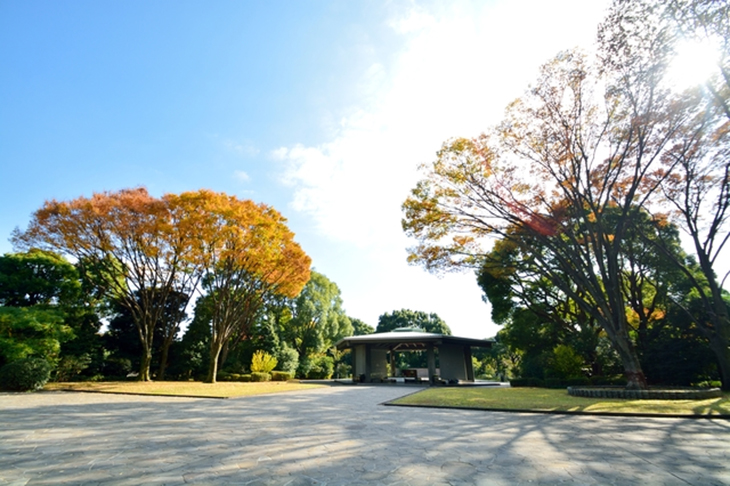
The movie Oppenheimer depicts the main character as a “man who makes mistakes.” In the trend of “politics of memory,” the retelling of 20th-century history is progressing. Japan does not have a national facility that deals with modern history, nor does it have a national facility that commemorates those who died in war. With this, retellings are not possible either. Japan is being left far behind in this trend.
Photo shows Chidorigafuchi National Cemetery located in Chidorigafuchi to the northwest of the Imperial Palace, nobby / PIXTA
Why is the Hollywood blockbuster about the “father of the atomic bomb” not scheduled for release in Japan?
Azuma Hiroki, critic and author
This August 2023, I spent eight days in Washington, D.C. for some coverage. I took time out of my schedule to watch Oppenheimer, the most talked-about movie of the summer. Unfortunately, it has not yet been released in Japan, and some people seem to think it is a controversial work. As someone who has seen almost all of director Christopher Nolan’s films, I’m very curious about this. I would like to share with you a little bit about what I thought after actually watching this film.
Oppenheimer, a movie depicting the life of American theoretical physicist J. Robert Oppenheimer (1904–67), known as the “father of the atomic bomb,” was released in the United States on July 21, 2023. The director is a genius, Christopher Nolan. Starring Cillian Murphy as Oppenheimer. Big-name actors such as Matt Damon, Robert Downey Jr., and Florence Pugh supported him.
The film depicts how Oppenheimer led the “Manhattan Project” to develop the atomic bomb, and the “Trinity” critical test of a prototype nuclear warhead in New Mexico at the end of World War II. Box office revenue exceeded 500 million dollars (approximately 71 billion yen) worldwide. The film is also being hailed as a candidate for next year’s Academy Awards.
However, the release date in Japan has not yet been determined (as of August 28th), and even a trailer with Japanese subtitles has not been released. There have been criticisms that the film doesn’t depict Hiroshima or Nagasaki and that it doesn’t have the perspective of the victims, and it’s rumored that the distribution company may have taken this into account. However, is this work really that “problematic”?
This is an “anti-war/anti-nuclear movie”
First of all, Oppenheimer was a very good work. I think this is one of director Nolan’s best works. It resonated with me as much as Interstellar or Inception.
The first thing that struck me was the sound. An eerie “rattling” vibration sound, reminiscent of the impact of a nuclear explosion, is used at key points and dominates the entire film. The music director is Ludwig Göransson, the same person who worked on Nolan’s previous work, Tenet, but personally, I felt it was similar to Inception, for which Hans Zimmer was in charge of the music. As was the case with Inception, the repeated heavy bass sounds express fear and emotional fluctuations, and skillfully direct the theme of the work.
Another interesting detail was the appearance of great scientists who were like shining stars around Oppenheimer at the time. Albert Einstein, Enrico Fermi, Niels Bohr and Werner Heisenberg. There is a scene where Oppenheimer goes to consult Einstein while he is walking in the forest. There’s a tall man next to Einstein, and there’s a line [Einstein] says, “I often take walks with him.” In fact, a very famous mathematician appears there. It may not be an accurate historical fact, but it was a scene that tickled my intellectual curiosity and made me think, “Maybe something like this could have happened.”
Considering the circumstances surrounding the film, it’s understandable that some people would be wary of a film that features the “father of the atomic bomb” as the main character. In fact, while this film depicts the development process of the atomic bomb in detail, the tragedy of being exposed to the atomic bomb is only mentioned in dialogue. It may be possible to criticize this for lacking awareness of the issues.
Additionally, in the film, a person whose skin has become keloid-like due to exposure to the atomic bomb appears briefly in Oppenheimer’s mind. However, as a Japanese, I naturally feel that the damage caused by the atomic bomb is not on this scale.
However, what I would like to emphasize is that Oppenheimer itself is clearly an “anti-war and anti-nuclear” work. The movie doesn’t celebrate Oppenheimer as a genius scientist. Nor is it a story that aligns with the values that justify the dropping of the atomic bomb, which is deeply rooted in the United States: “[The dropping of the atomic bomb] hastened Japan’s surrender and saved the lives of many American soldiers.”
“Scientists who make mistakes”
To give you a synopsis without spoiling the story, the film is set in the United States before and after World War II. The story progresses back and forth between before and after the war.
Oppenheimer, a Jewish American, joins the Manhattan Project, which aims to develop an atomic bomb, because he believes he must stop the brutality of the Nazis. Having a talent for leadership, he became the director of the Los Alamos National Laboratory and finally succeeded in developing the bomb. However, understanding its destructive power, he came to deeply regret the atomic bomb attacks on Hiroshima and Nagasaki.
Although he was briefly honored as the “father of the atomic bomb,” after the end of the war he changed his mind and turned to anti-war activities, calling for nuclear disarmament. He also opposes the development of the hydrogen bomb, and his position in the academic world is in jeopardy.
In fact, he had an affinity for left-wing activities from a young age, and his younger brother and college sweetheart were also members of the Communist Party USA. Therefore, when the era shifted to the Cold War between the United States and the Soviet Union, he became involved in the “Red Scare,” which expelled Communist Party members and sympathizers from public office. And he loses a lot.
This time, the fact that sexual acts are depicted, which is rare in director Nolan’s movies, became a hot topic before its release. Oppenheimer is attracted to a woman who is a member of the Communist Party and ends up having a relationship with her. Moreover, this relationship continues even after he marries another woman. The affair was brought to light after the war. I won’t go into details, but Oppenheimer also makes an irreparable mistake in his relationship with the woman.
In other words, this movie depicts the scientist Oppenheimer as a person who makes mistakes. He repeatedly makes mistakes both politically and sexually. He is struggling to fix them. It is a story of a man who is torn between the necessity of developing the atomic bomb and the cruelty of dropping it, and who is at the mercy of the times and makes various mistakes. Although there are scenes in which soldiers are happy after a successful atomic bomb test, and scenes in which the president jokes about the target of the bomb, the film is clearly presented in a critical manner. Oppenheimer isn’t laughing.
So why isn’t the film released in Japan? There have been many films by Americans depicting the Pacific War. There was Clint Eastwood’s Letters from Iwo Jima, which is considered a masterpiece. There was also a movie called Pearl Harbor starring Ben Affleck. After all, the theme of the atomic bomb is special.
“Barbenheimer” controversy
In addition, the “Barbenheimer controversy” on social media gave a very bad impression. In North America, Oppenheimer was released at the same time as Barbie, a comedy film about live-action dress-up dolls. Therefore, on the American Internet, the word “Barbenheimer” was coined by combining the names of the two works, and fan art combining Barbie and mushroom clouds became popular and spread. This caused unnecessary backlash in Japan and worsened the situation.
Under such circumstances, it is understandable that Japanese distribution companies would be hesitant to release the film. Oppenheimer is the perpetrator. If the film does not feature him as the main character and depict the suffering of the atomic bomb survivors, there will be an inevitable backlash in Japan. However, I think it would be a waste if this movie was not released.
Society is complex, and dividing things into perpetrators and victims does not always make sense. Everyone has the potential to be a “victim” and a “perpetrator” at the same time. A person who is a “victim” in one group may make the mistake of being a “perpetrator” in another group.
Oppenheimer depicts exactly that difficulty. Oppenheimer was Jewish and developed the atomic bomb to stop Nazi violence. But it caused huge harm. Now that the Ukraine war is happening and nuclear deterrence is a hot topic, I think this is a movie that should be seen in Japan.
Social media is a world where simple schematics win. The Barbenheimer controversy happened on social media, and so did the criticism of the movie. But Oppenheimer deals with a more difficult problem. It would be foolish to forget that humans are fundamentally fallible and pretend to be right.
There is another problem. I believe that dropping the atomic bombs on Hiroshima and Nagasaki was genocide and cannot be justified. What the Barbenheimer controversy made clear is that, unfortunately, this understanding has not become the norm internationally. Japanese people consider the dropping of the atomic bomb a genocide, but most Americans do not think so.
I can understand being angry at the insensitivity of American audiences. However, on the other hand, shouldn’t we, as Japanese people, also consider how much we were able to convey to the world the tragedy of the atomic bomb?
For example, at the G7 Hiroshima Summit held in May 2023, President Biden did not visit the Main Hall of the Hiroshima Peace Memorial Museum, where the devastation of the atomic bombing is displayed. Instead, he only visited the East Wing, which is said to have relatively modest exhibits. The time spent by the President was the shortest among the G7 leaders. This is said to be out of consideration for the domestic situation of the United States, but I think it is okay for Japan to protest.
President Obama’s visit to the Hiroshima Peace Memorial Museum seven years ago (2016) was only in the East Wing, and his visit was even shorter than President Biden’s, lasting only 10 minutes. The content of his speech was quite abstract: “Seventy-one years ago, on a bright, cloudless morning, death fell from the sky and the world was changed.” Of course, death cannot fall from the sky. The United States intentionally dropped the atomic bomb. However, the media was very welcoming. Even now, in the United States, there is no proper exhibition of the damage caused by the atomic bomb. I think this is the result of Japan’s poor diplomacy.
At this summit, “G7 Leaders’ Hiroshima Vision on Nuclear Disarmament” was adopted, and there was notable criticism of Prime Minister Kishida Fumio’s recognition of nuclear deterrence. I think peace through nuclear deterrence is realism. Therefore, I can support it. However, it is possible to balance this with appealing to the world about the cruelty of nuclear use.
“Politics of memory” sweeping the world
On this occasion, I stayed in Washington, D.C., to cover an intensive tour of museums and monuments. It’s not surprising that the United States’ political monuments and museums are concentrated in the capital, Washington, but what took me by surprise was their relative newness. This revelation led to the interviews I conducted.
Of particular note is the “National Mall” located in the center of the city. This park is home to iconic structures of the United States, such as the Lincoln Memorial and the Washington Monument, which everyone has seen in photos. The National Mall was actually completed in the mid-20th century in a state close to its current state. Since then, more and more monuments have been added. The Vietnam Veterans Memorial opened in 1982, the Korean War Veterans Memorial in 1995, the Franklin Delano Roosevelt Memorial in 1997, the National World War II Memorial in 2004, and the Dwight D. Eisenhower Memorial in 2020. In other words, over the past 40 years, Washington has rapidly become full of monuments. Added to this is the opening of the National Museum of African American History and Culture.
In fact, the proliferation of monuments and museums is not just a phenomenon in the United States. It is deeply connected to the rise in the “politics of memory” that is occurring all over the world.
Since the 1970s, and especially since the collapse of the Cold War, the world has been promoting “retellings” of modern history. This movement is particularly strong in former Soviet Union countries and Eastern Europe. During the Soviet era, Russia and Ukraine were considered brotherly countries. As you all know by now, behind this is the correction of 20th-century history. Such historical correction is also happening in the Baltic states. I visited Lithuania a few years ago. I learned at that time that the current official history includes the occupation by Nazi Germany in 1941 and the subsequent rule by the Soviet Union, all of which are linked into the “Long Period of Occupation.” History has become quite different from the history I learned when I was in high school.
A similar movement is occurring in East Asia. In South Korea, the National Memorial Museum of Forced Mobilization under Japanese Occupation was opened in Busan in 2015. In China, a museum dedicated to Unit 731 of the former Japanese Army was expanded in 2015.
In Japan, such movements in China and South Korea tend to be seen in the context of “Anti-Japanese education,” but I think they are essentially a larger trend called “politics of memory.” Retellings of 20th-century history and modern history are being carried out all over the world. The US movement is also considered to be part of this. What I felt strongly this time was the concern that Japan is being left far behind in this trend.
America’s “power to correct”
All the new museums and monuments I saw in Washington, D.C. had one thing in common. In short, it was a strong desire to return to the origins of the founding of the United States, reflect on the history of racism and sexism, and recapture the “spirit of America.”
For example, there is a politician named Thomas Jefferson, who is considered one of the “Founding Fathers.” He is one of the drafters of the Declaration of Independence and a great figure who symbolizes America, the land of freedom. However, at the National Museum of African American History and Culture, which opened in 2016, he is displayed as a bronze statue against a brick wall inscribed with many people’s names.
What this means is that Jefferson actually owned slaves. Of the 609 slaves, the names of those who have been confirmed so far are engraved on it. I was impressed by this exhibit.
Jefferson is a hero to Americans. He was also wrong at the time. The National Museum clearly shows this. The statue’s pedestal was inscribed with the words “The Paradox of Liberty.” This Founding Father, who advocated for freedom and equality, had many slaves. Rather than hiding this mistake, or simply canceling it (denying its existence), American people display it as a contradictory existence. I asked myself if it would be possible to create a modern history museum like this in Japan.
By the way, this museum was designed by an African American architect named David Adjaye, and it is a beautiful piece of architecture as well. Families come from all over the country to see it during summer vacation. The museum served as a place for historical education.
“Democracy was immature”
For Native Americans, there is also the National Museum of the American Indian. Americans persecuted Native Americans and even created the infamous “Indian Removal Act of 1830” under the seventh president, Andrew Jackson. The indigenous people were forced to relocate and many were killed. The museum shows deep remorse for this history. It opened in 2004, just 20 years ago.
Both museums not only reflect on history, but also say, “Racism was against the founding spirit of our nation. Democracy was immature. So, by correcting and overcoming it, we should return to the founding spirit.” I was impressed by how powerful the story was. This is very strong.
In this respect, Japan is clearly behind the curve. There are no such retellings about modern history. Liberal history is only post-war, and conservative retellings result in childish chauvinism. There is no attempt at all to go back to Japan’s past and redefine Japan in order to move forward into the future.
In other words, in that country, “political correctness” has not fallen into the activity trap, and liberals are also looking toward the future. The United States has also made many mistakes in the past. But they have the belief that this country will become stronger if it rectifies its past mistakes.
Japan doesn’t have that. The past is either reflected upon or forgotten. There are no retellings. To begin with, there is no national museum that focuses on modern history.
Overlooking Arlington National Cemetery
The lack of museums is also linked to the lack of memorial facilities. Because how we treat the dead is our attitude toward history itself. Japan does not have a proper memorial facility for those who died in the service of the country. Yasukuni Shrine is just a private facility, and Chidorigafuchi National Cemetery is just a place to enshrine unidentified remains.
Arlington National Cemetery is a memorial facility in the United States, but it is actually just across the bridge from the Lincoln Memorial at the west end of the National Mall. It’s located in the nation’s center, on a hill overlooking monuments to Abraham Lincoln and George Washington. And at the bottom of the hill is the Pentagon (U.S. Department of Defense). The shape of the country is clearly reflected in the urban structure.
On the other hand, what about Japan? Since the shape of the country is not clear, the structure of cities is also not clear. We can’t even talk about history because we don’t commemorate the dead. Since we don’t have a proper modern and contemporary museum, we can’t even do retellings. There was a time when people talked about “departure from the post-war regimes,” but before we knew it, history had become a toy for online right-wingers. We don’t have the power to create a new national identity.
Reform does not mean denying the past and resetting everything. Rather, it is about accepting the past and moving forward. Swallow past mistakes and move forward. To achieve this, we must return to the country’s origins. We need that kind of dynamism.
Oppenheimer was a movie about people who make mistakes. Rather than canceling (denying the existence of) the person who made the mistake, correct it and connect it to the future. Japan needs that kind of power today. If this film is kept unreleased for fear that its release will cause a stir, Japan will become increasingly left behind by the rest of the world. I hope everyone involved will have the courage to consider releasing the film in Japan.
Translated from “Mondaisaku ‘Oppenhaima’ wo mitekita (Watched the film Oppenheimer),” Bungeishunju, October 2023, pp. 172–179. (Courtesy of Bungeishunju, Ltd.) [October 2023].
Keywords
- Azuma Hiroki
- Genron
- Oppenheimer
- Christopher Nolan
- J. Robert Oppenheimer
- Manhattan Project
- atomic bomb
- anti-war
- anti-nuclear
- nuclear disarmament
- Pacific War
- Barbie
- Barbenheimer
- victim
- perpetrator
- Hiroshima Peace Memorial Museum
- President Biden
- President Obama
- politics of memory
- monuments
- museums
- modern history
- retellings
- power to correct
- slavery
- Paradox of Liberty
- political correctness
- Yasukuni Shrine
- Chidorigafuchi National Cemetery
- Arlington National Cemetery
